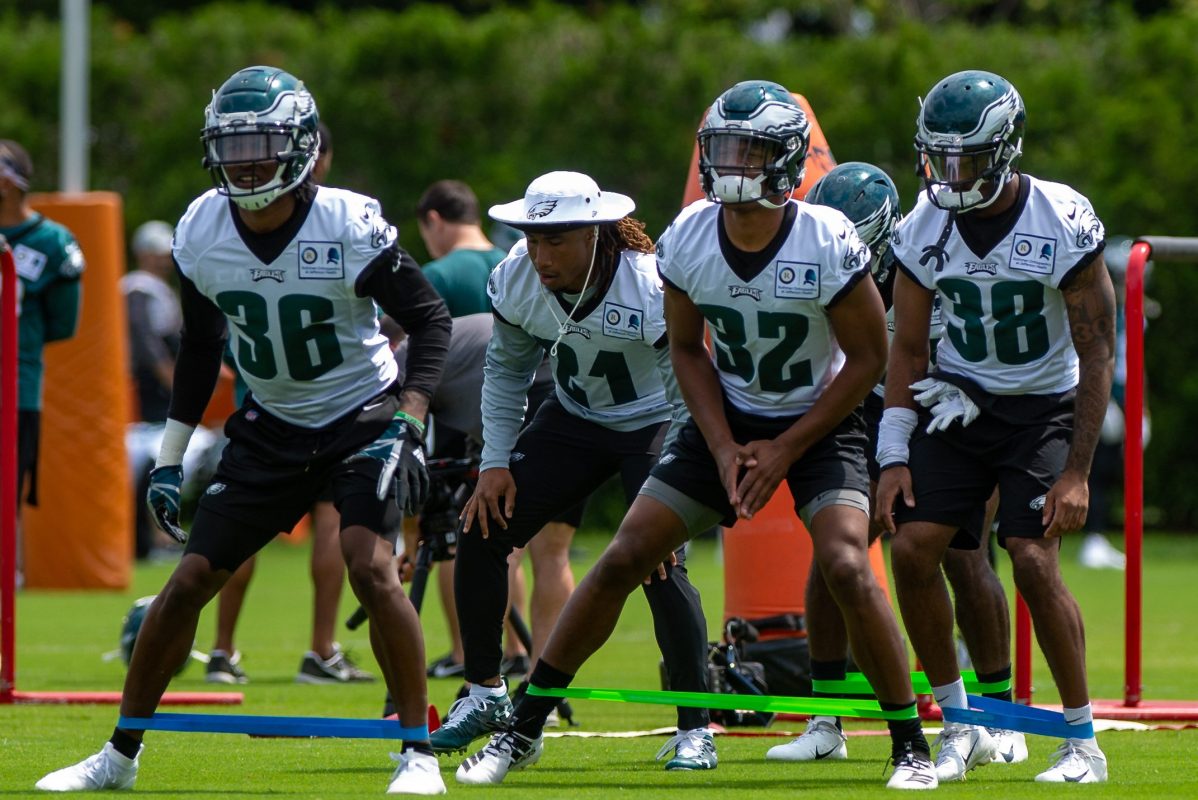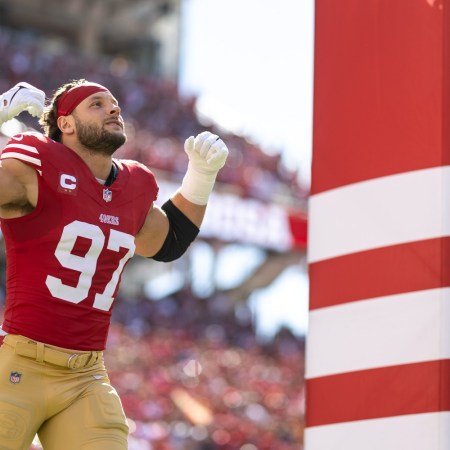When organized team activities (OTAs) started this week across the NFL, Packers quarterback Aaron Rodgers was not in attendance in Green Bay. As it turns outs, neither were the team’s top five receivers: Davante Adams, Marquez Valdes-Scantling, Allen Lazard, Devin Funchess and Equanimeous St. Brown.
Rodgers skipping the voluntary workouts — and costing himself $500,000 in the process — got a lot of ink, but he was far from the only player to skip this week’s OTAs, which are the third phase of the NFL offseason prior to mandatory minicamp beginning in mid-June.
Though players have routinely skipped OTAs, which are intended to provide training, teaching and physical conditioning for players, throughout the years, this offseason is slightly different, as the NFL Players Association (NFLPA) has pushed its membership to skip every aspect of the offseason program except for next month’s mandatory minicamp.
Here’s a breakdown of the situation:
What Are OTAs?
OTAs are voluntary, but some players (like Rodgers) have bonus money attached to their attendance of the optional workouts. Here’s what they can consist of this year: “Clubs may conduct in-person meetings and classroom instruction subject to COVID-19 testing cadence, tracking, facility access and other protocols. During Phase Three, teams may conduct a total of 10 days of organized team practice activity, or ‘OTAs.’ No live contact is permitted, but 7-on-7, 9-on-7, and 11-on-11 drills are permitted.”
Why Does the NFLPA Oppose Them?
As noted above, the NFLPA officially opposes players participating in OTAs due to the COVID-19 pandemic. Unofficially, the union wants players to boycott the sessions because there is a belief that last year’s virtual offseason proved a traditional offseason program isn’t necessary. In general, the NFLPA would like to decrease the amount of OTAs, and getting players to skip practices and workouts this offseason is a way of communicating that message to the league and could theoretically give the union more leverage when it is time to negotiate the next collective bargaining agreement (CBA) with NFL owners. As a result of the threat of player boycotts, many teams altered their on-field programs this offseason.
What Are the Risks for Players Who Attend?
The major risk of attending OTAs, other than potentially offending the NFLPA and players who skipping the voluntary workouts, is injury and an increase of general wear and tear. Last season, when the offseason was completely virtual, the number of missed-time injuries decreased to 2,716 from an average number of 3,524 over the previous five years. “Now we see what those changes brought us,” NFLPA president J.C. Tretter said of last year’s virtual offseason. “There’s really no denying it anymore. You can avoid soft tissue injuries. You can avoid concussions. You can avoid heat-related illness. You can avoid those things by following the science.”
What Are the Risks for Players Who Skip?
Players are protected against lost wages if they sustain an injury while working out or practicing at a team’s facility. They don’t have the same protection if they’re injured practicing anywhere else, and can lose their salary as well as bonus money if they get hurt working out on their own. That happened with former Bronco Ja’Wuan James, who tore an Achilles tendon while working out away from the team’s headquarters and was subsequently cut by the team. Under the terms of the CBA, the Broncos weren’t obligated to pay James’ $10 million-plus salary for 2021.
In addition to losing cash, players who skip OTAs risk losing their job to a player who is in attendance. While that isn’t a real risk for players like Rodgers or Adams, it is a legit concern for the rank-and-file guys who make up the majority of a team’s roster. “For at least 60 and probably more than 70 of the players on the offseason roster, any opportunity to be at the facility in any capacity is a chance to make a favorable impression on someone who is part of the evaluation process,” former NFL offensive lineman Ross Tucker told The Athletic. “That is especially true now during Phase Three of the program with the on-field work. Why would you not do everything possible to put yourself in the best possible light to secure your role on the team for the season, which is when NFL players receive their entire salary? Even more to the point, why would you allow other players, with whom you are competing for roster spots, to get that time with the coaches while you are back home working out on your own? I won’t go as far as to call that a career killer, but it’s certainly not very smart given the finite amount of both roster spots and time in front of the evaluators to earn those spots.”
Tucker’s point is even more salient this season, as there will only be three preseason games for players to prove themselves instead of four thanks to the addition of a 17th game to the regular-season schedule.
Whether you’re looking to get into shape, or just get out of a funk, The Charge has got you covered. Sign up for our new wellness newsletter today.
























